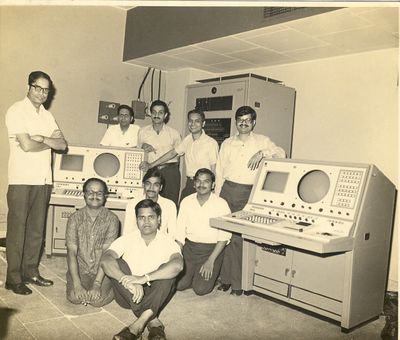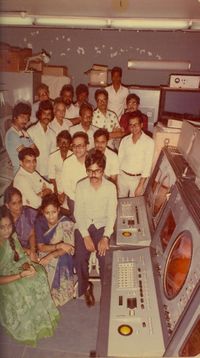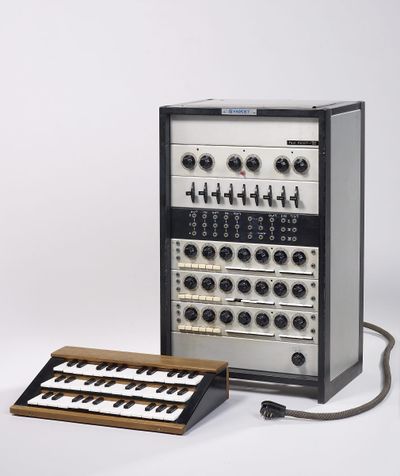Difference between revisions of "FSMR"
(→Research) |
(→Early History) |
||
| Line 10: | Line 10: | ||
[[File:TIFR-console.jpg|right|400px|TIFR]] | [[File:TIFR-console.jpg|right|400px|TIFR]] | ||
| − | |||
| + | [[File:TIFR-xconsole.jpg|right|200px|TIFR]] | ||
| + | FSMR began in 1976. It was founded by physists, composers and computer scientists most of whom were involved in building the TIRFAC, the first Indian computer. Inspired by the visits of John Cage, David Tudor and other American composers to India, FSMR's experiments were built on combining Hindustani and Carnatic music with Electronics and Computers. | ||
== Research == | == Research == | ||
Revision as of 13:55, 25 September 2017
Contents
FSMR
FSMR (Fundamental Systems Music Research) was a center for research and development of new musical instruments in the electronic performing arts, located in Bangalore, [INDIA]]. It was a center for research in Indian Electronic music. The group began its operations in 1976.
Early History
FSMR began in 1976. It was founded by physists, composers and computer scientists most of whom were involved in building the TIRFAC, the first Indian computer. Inspired by the visits of John Cage, David Tudor and other American composers to India, FSMR's experiments were built on combining Hindustani and Carnatic music with Electronics and Computers.
Research
The FSMR built one of the first synthesizers - the APSARA. Inspired by a visit to an Italian concert of Electronic music. The synthesizer featured a keyboard optimised to play microtones and Indian Scales.


